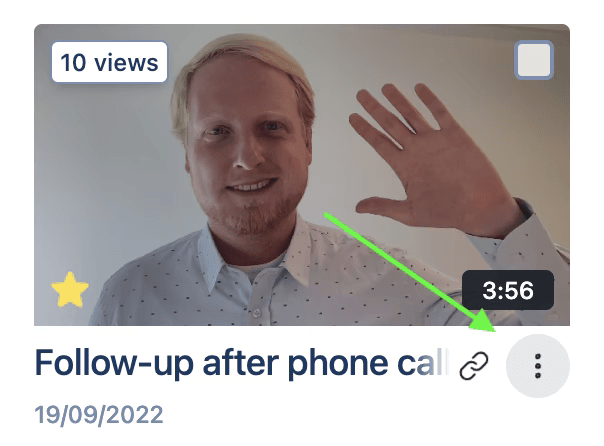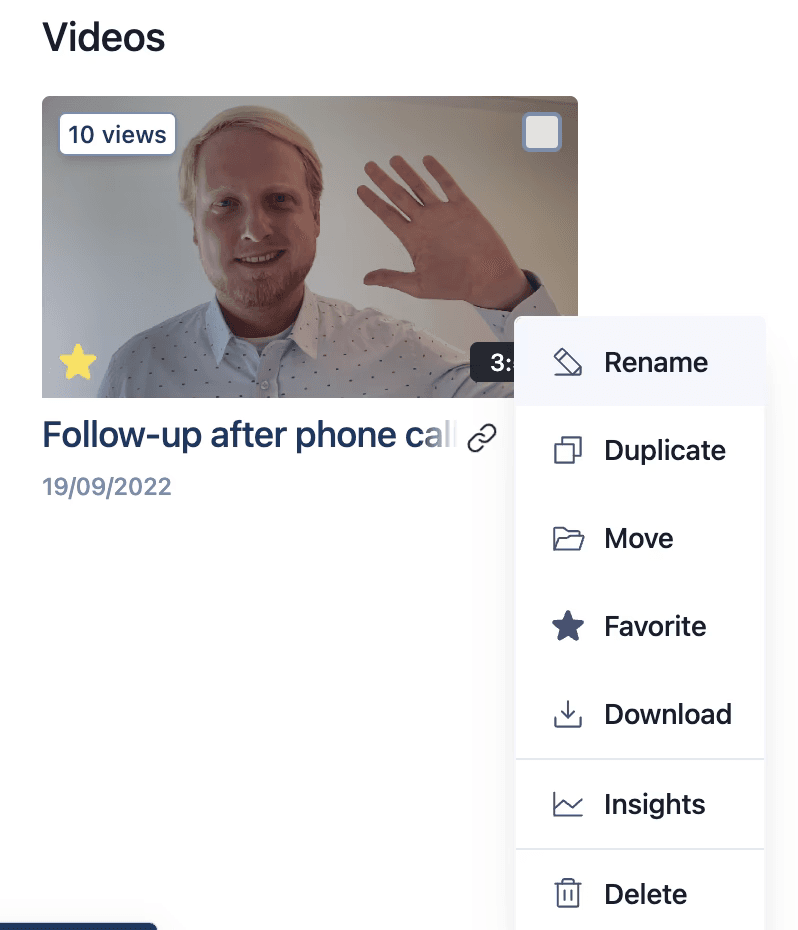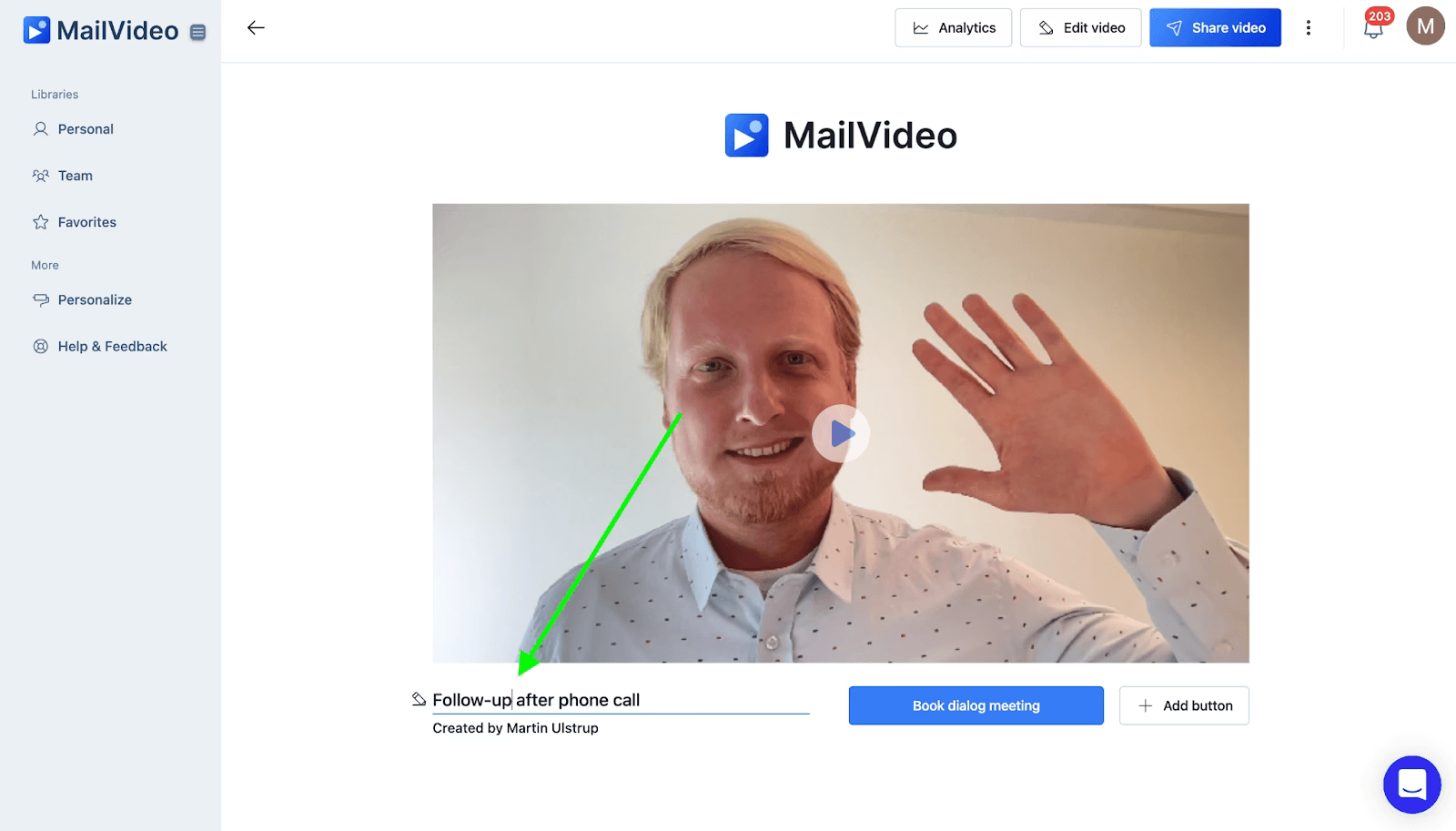Changing your video title is essential for organization and making your content easily identifiable. MailVideo provides two convenient ways to rename your videos.
Method 1: Rename from Video Library
The quickest way to rename a video is directly from your video library:
- Locate Your Video: Find the video you want to rename in your library
- Access Options Menu: Click the three dots on the video card
- Select Rename: Click “Rename” from the dropdown menu

- Enter New Title: Type your new video title in the text field
- Save Changes: Press Enter or click outside the field to save

Method 2: Rename from Video Page
You can also rename your video directly from the video viewing page:
- Open Video Page: Click on the video to open its dedicated page
- Click on Title: Simply click on the current video title at the top of the page
- Edit Title: The title will become editable - type your new title
- Save Changes: Click elsewhere or press Enter to save your changes

Best Practices for Video Titles
Descriptive and Clear
- Use titles that clearly describe the video content
- Include relevant keywords that help with searchability
- Keep titles concise but informative
Consistent Naming Convention
- Develop a consistent naming system for your videos
- Consider including dates, project names, or version numbers
- Use categories or prefixes for different types of videos
Examples of Good Video Titles
- Product Demo: “Product Demo - Feature Overview - v2.1”
- Client Presentation: “Q4 Results Presentation - ClientName - Dec 2023”
- Training Video: “Onboarding - Welcome & Setup Instructions”
- Personal Video: “Weekly Update - Project Status - Week 12”
When to Change Video Titles
Organization Purposes
- Project Updates: When video content or purpose changes
- Version Control: Adding version numbers to track iterations
- Categorization: Organizing videos by topic, client, or project
- Search Optimization: Making videos easier to find in your library
Content Changes
- Updated Information: When you’ve updated the video content
- Audience Changes: When the target audience changes
- Purpose Evolution: When the video’s intended use changes
- Branding Updates: Aligning with new branding or messaging
Tips for Effective Video Organization
Folder Structure
While changing titles, consider organizing your videos into folders:
- Create folders by project, client, or content type
- Use consistent naming across related videos
- Include creation dates when relevant
Search Functionality
Remember that well-titled videos are easier to find:
- Use searchable keywords in your titles
- Include relevant terms your team would search for
- Consider adding brief descriptions in addition to titles
Team Collaboration
When working with a team:
- Establish naming conventions everyone follows
- Include team member names when relevant
- Use project codes or client abbreviations consistently
- Consider including recording dates for version control
Common Title Mistakes to Avoid
Generic Titles
- Avoid titles like “Video 1” or “Recording”
- Don’t use only dates without context
- Skip vague terms like “Meeting” or “Update”
Too Long or Complex
- Keep titles under 60 characters when possible
- Avoid unnecessary technical jargon
- Don’t include full sentences as titles
Inconsistent Formatting
- Maintain consistent capitalization
- Use the same date format throughout
- Apply naming conventions uniformly
Bulk Renaming Tips
While MailVideo requires individual renaming, you can make the process more efficient:
Planning Approach
- List all videos that need renaming
- Develop naming convention before starting
- Rename related videos at the same time
- Keep a record of old vs. new names if needed
Systematic Process
- Work through videos in chronological order
- Group similar content types together
- Use consistent terminology across all videos
- Double-check spelling and formatting
Remember that good video titles are investments in your future productivity. Taking time to create clear, descriptive titles will save you time when searching for specific videos later and help your team understand your content library structure.
